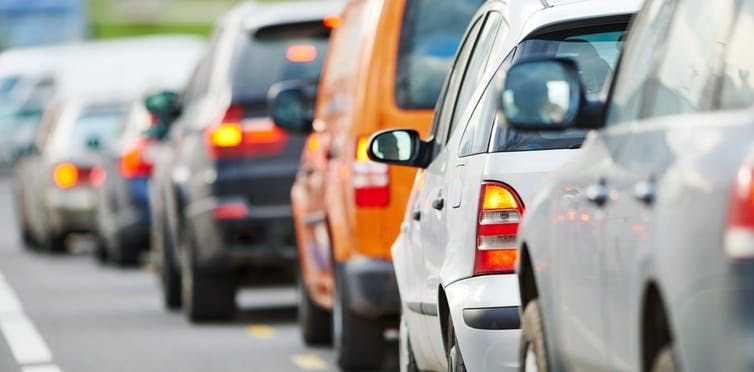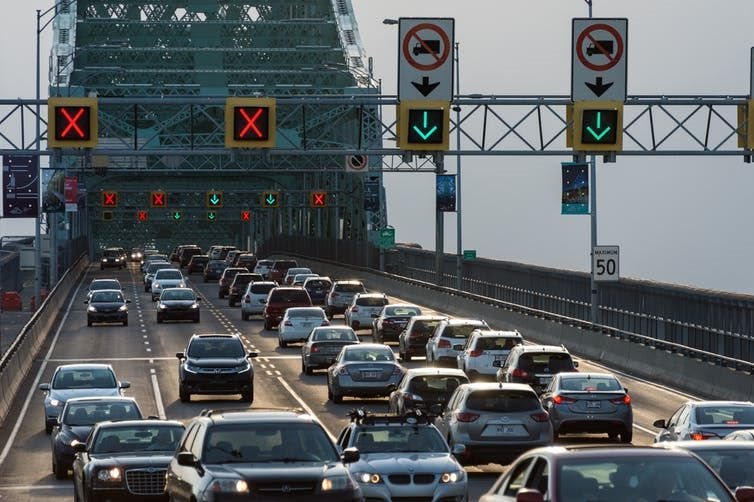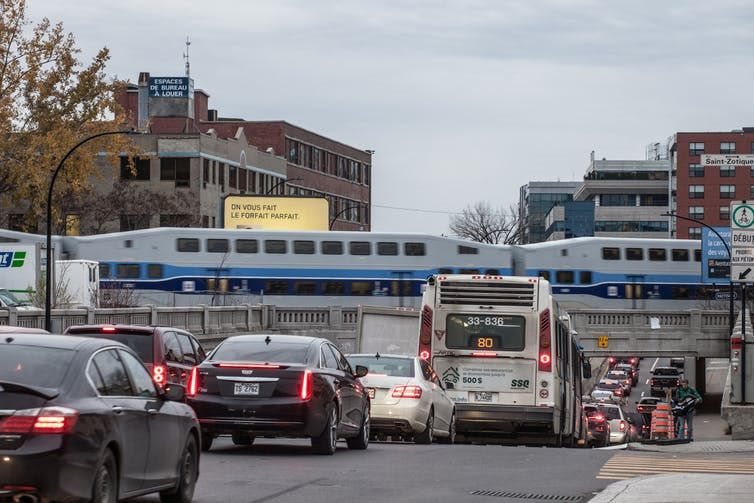
Top stories




Some even say that aspiring to less congestion is not desirable, as the road network is designed to absorb peak traffic during the morning rush hour. Not having congestion means there is more capacity within the network than demand.
Yet the environmental, social and economic costs associated with traffic congestion are real and affect the health, quality of life and wallet of all taxpayers and citizens on a daily basis.
The consequences of road congestion are generally measured in terms of additional travel time, and with the associated costs of additional vehicle use, such as fuel, depreciation and maintenance.
Some studies also include greenhouse gas (GHG) emissions and additional accidents caused by more time spent in traffic. Congestion also leads to other direct and indirect costs such as premature wear and tear on roads and impact on the health of people.

Montréal is the second most congested city in Canada, with a total of 145 hours lost per capita in peak rush hour traffic in 2018. It comes after Toronto, which ranks first among Canadian cities (167 hours lost). Québec City ranks ninth (85 hours lost).
Road congestion also increases the air pollution produced by the combustion of fossil fuels, leading to an increase in respiratory problems, premature deaths and several types of cancer, especially for neighbouring populations, which are often disadvantaged.
Gasoline and diesel vehicles also emit carbon dioxide, a powerful greenhouse gas responsible for global warming. In Canada, the entire transportation sector is the second largest source of greenhouse gases emissions , accounting for 28 per cent of total emissions.
Read more: When it comes to vehicles, Canada tops the charts for poor fuel economy
In Québec, transportation accounted for 43 per cent of total greenhouse gases emissions in 2016, of which 80 per cent came from road transportation. These emissions increased by 52 per cent between 1990 and 2016.
Although greenhouse gas emissions from road congestion are not systematically inventoried, they are often used to justify new road projects. But why does congestion persist, despite government interventions to reduce it?
The government response to congestion problems has generally been to build new roads or widen existing ones. However, this measure is ineffective because increasing capacity only increases vehicle use.
New routes generate additional demand equivalent to the new capacity. This natural near balance between supply and demand explains why roads reach pre-expansion congestion levels between five and 10 years after the construction of new routes.
What American economist Anthony Downs called “the fundamental law of highway congestion” in 1962 has since been confirmed by a large number of scientific studies.
The new traffic caused by the increase in road capacity, commonly referred to as “induced demand,” comes from four sources: increased commercial traffic, changing travel patterns, population migration and, to a lesser extent, diversion of traffic from other routes.
In the short term, new road segments reduce travel time and therefore costs, which encourages individuals and businesses to travel more, change departure times or itineraries, choose cars over public transit or move further away from where they work.
This increase in demand therefore compensates proportionally for the new road supply in the medium term, and at the same time for the reduction in greenhouse gas emissions that could have been associated with a reduction in congestion.
In addition, the road network may not be used to its optimal capacity because users make an individual decision about the fastest route for their travel, regardless of the choices of others. These decisions may not correspond to the social optimal. Thus, the addition of a road can increase the total travel time over the entire network (and vice versa), making it necessary to coordinate individual trips.
Another argument often used to justify increasing road capacity is that of job creation and economic development. Although road infrastructure creates employment during its construction, most studies have not found a link between increased road capacity and economic activity. Indeed, it is rather a displacement of economic activity across the same metropolitan region that is observed.
For example, exporting companies will be located along the new road infrastructure, but this will not have a significant effect on the total value of their production.
Increasing public transit is often promoted as the main alternative to building additional lanes or new roads. However, in accordance with the fundamental law of congestion, the space freed up by the use of public transport is ultimately compensated for by the additional demand it creates. Thus, public transport is not enough to reduce congestion.
In fact, if the objective is to reduce car traffic, the only effective method on the supply management side is reduction in road capacity, because the law of road congestion also works in the opposite direction: what we refer to as “reduced demand.” In addition to reducing travel demand, lane removal and traffic restriction also have measurable and documented social, environmental and economic benefits.

Other measures are used to manage transport demand. First, the imposition of eco-tax measures, such as the gas tax and the parking tax, can help reduce vehicle use.
A Québec study reveals that increasing the gas tax to $0.46/L in Québec and introducing a road use tax of $0.15/km in greater Montréal area would make it possible to reach a quarter of Québec’s target for reducing greenhouse gas emissions from transportation, in addition to increasing the use of public transit by almost 40%.
Eco-taxation also encourages motorists to use public and active modes of transport, provided that these choices are available to them.
Teleworking, flexible working hours, parking management and so-called smart growth policies also reduce travel distances and the need or willingness to travel by car. These measures have positive consequences on public health, urban quality of life, land values, local consumption, etc.
The most effective planning choices are not always the most popular. To get them accepted, decision-makers must act at the right time, use technical expertise, conduct pilot projects, find allies, compensate for inconveniences and work with the various levels of government.
This text is an abridged version of a text originally published in the journal Le Climatoscope.
This article is republished from The Conversation under a Creative Commons license. Read the original article.

The Conversation Africa is an independent source of news and views from the academic and research community. Its aim is to promote better understanding of current affairs and complex issues, and allow for a better quality of public discourse and conversation.
Go to: https://theconversation.com/africa